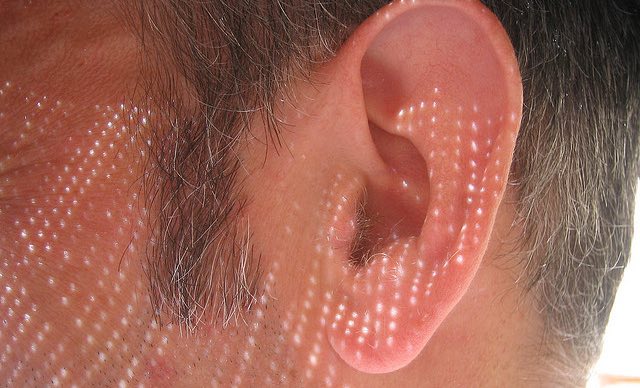A new study led by the University of Kent has shown that gentle, controlled stimulation of the ear canal can help reduce symptoms of Parkinson’s disease.
The randomized, controlled study—which was conducted on 46 individuals with Parkinson’s disease—showed that twice-daily stimulation for two months was associated with a significant reduction in both motor and non-motor symptoms of the condition.
Participants reported greater movement and mobility, and showed improvements in decision-making, attention, memory, mood, and sleep. Participants also said that by the end of the study, they found it easier to perform everyday activities by themselves.
Most of the therapeutic gains were greatest five weeks after the end of treatment, suggesting that the treatment may have long-lasting effects.
CHECK OUT: Another Study Shows How Flickering Lights Can Slow (And Maybe Even Reverse) Alzheimer’s Symptoms
“Those symptoms are often untreated or poorly treated and have a particularly detrimental impact on quality of life, and their treatment is a key unmet need,” said Professor Ray Chaudhuri, Director of the National Parkinson Foundation Center of Excellence at King’s College Hospital.
The stimulation therapy was performed at home using a portable headset produced exclusively for clinical investigations by Scion Neurostim, a US-based device company. Participants continued to take their regular dopamine replacement therapy while using the “easy-to-use” device.

The study, which was published earlier this week in the journal Parkinsonism and Related Disorders, was led by Professor David Wilkinson at Kent’s School of Psychology.
These results build on other work conducted by Wilkinson’s research group, which has shown that gentle stimulation of the inner ear can also improve neurological symptoms associated with stroke and traumatic brain injury.
WATCH: Success of Advanced-Stage Parkinson’s Treatment is ‘Beyond Researcher’s Wildest Dreams’
“This study raises the intriguing possibility that some aspects of Parkinson’s disease may be better managed if traditional drug-therapies are combined with gentle, non-invasive stimulation of the balance organs,” said Wilkinson.
Professor Chaudhuri said he was very encouraged by the results. “Achieving both widespread efficacy and durable gains in motor and specifically non-motor aspects of Parkinson’s disease would be quite novel, and improvements in non-motor symptoms would be especially notable.”
Reprinted from the University of Kent – See more GNN GOOD NEWS on Parkinson’s disease.
Be Sure And Share The Good News With Your Friends On Social Media…



















